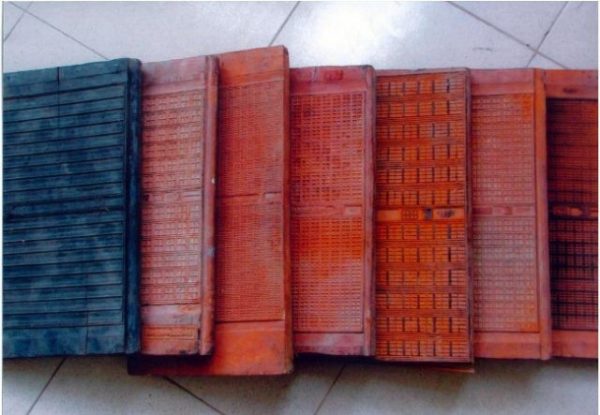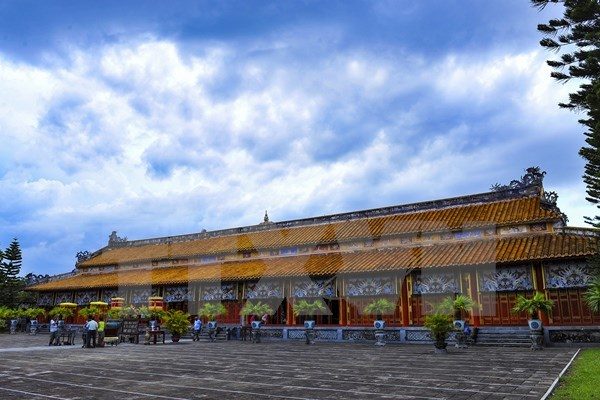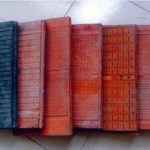The exhibition will open in the morning of August 26, 2017 at Thai Hoc House (House of Scholarship), Temple of Literature (No. 58 Quoc Tu Giam, Dong Da District, Hanoi City).
This exhibition will introduce three documentary heritages of the Nguyen dynasty which were recognized by UNESCO as the World’s Documentary Heritages (within a program known as the Memory of the World Programme), a title first conferred in 1992. The documentary heritages will be introduced through a number of prominent themes such as Official Names of Country on Woodblocks, Imperial Examination through Royal Approval on Official Documents of Nguyen Dynasty, and Patriotism in Poems on Hue Imperial Architectural Works. The exhibition includes over 70 photos of woodblocks, royal approval on official documents, and poetry in Hue imperial architecture as well as 16 versions of woodblocks.

Nguyen Dynasty’s woodblocks are Vietnam’s first documentary heritage recognized by UNESCO. These are wood engraving plates used for printing Han scripts and Nom scripts of many different types such as history books, geography books, and literature books, especially books about the history of the Nguyen Dynasty as well as the history of Vietnam. The woodblocks are informative and of artistic value as they showcase the fine craftsmanship of the craftsmen in the past. Nguyen Dynasty’s Woodblocks were recognized as a World’s Documentary Heritage by UNESCO on July 31, 2009. The contents on the woodblocks presented at the exhibition revolve around the official names throughout the history of the country. The country’s official names are reflected quite adequately on the woodblocks as each page features a historical story about the names through the ages. From the beginning of history to 1945, Vietnam underwent nine changes in the name of the country, from Xich Quy to Van Lang, Au Lac, Van Xuan, Dai Co Viet, Dai Viet, Dai Ngu, Vietnam, and Dai Nam.

Royal Approval on Official Documents of Nguyen Dynasty is Nguyen Dynasty’s second documentary heritage recognized as a World’s Documentary Heritage. These are administrative documents of the Nguyen dynasty which were drafted and approved by central and local authorities for consideration and approval by the Emperor in red ink in order to convey the will of the Emperor or to address political, military, diplomatic, economic, cultural, and social issues. Royal Approval on Official Documents reflects fully and comprehensively the views as well as domestic and foreign policy of the Nguyen Dynasty in all aspects of the contemporary society. On May 14, 2014, Royal Approval on Official Documents of Nguyen Dynasty was recognized as a World’s Documentary Heritage under the Memory of the World Programme for Asia and the Pacific. This exhibition focuses on introducing Royal Approval on Official Documents related to education and imperial examination during the Nguyen Dynasty. Nguyen Dynasty’s education and imperial examination focused on training officials for the state administrative system. Documents and Royal Approval on Official Documents related to this topic cover quite vividly a wide range of issues in relation to policies on education, training, and election of the Nguyen Dynasty for the training and use of talents.
Poems on Hue Imperial Architectural Works are Nguyen Dynasty’s third documentary heritage recognized as a World’s Documentary Heritage. Unlike woodblocks which are negative imprints used to print books, poems engraved on wooden structures of the imperial architectural works of the Nguyen Dynasty are highly valuable and complete positive carvings made with the monoprint technique. Most of the Nguyen Dynasty’s royal architectural works are decorated with poems in the style of “each poem should be accompanied by a painting” and “each character should be accompanied by a painting”. The poems on Hue imperial architectural works are carved, engraved, encrusted, casted, burned, grafted into various materials (wood, copper, copper alloy, ivory, bones, porcelain), creating a plentiful collection of monoprints which are highly valuable in terms of art, culture, and history.

The Mieu (Imperial Ancestral Temple) (Imperial City of Hue) is decorated with embossed carvings, engravings, and red-painted and gilded wooden structures on symmetrical cells. (Photo by Vietnam News Agency)
On May 19, 2016, the Poems on Hue Imperial Architectural Works were recognized as a World’s Documentary Heritage under the Memory of the World Programme for Asia and the Pacific. The exhibition presents poems written in Han script on Hue imperial architectural works on many different topics, most prominent the patriotism, which affirm the fine cultural traditions as well as express the pride in the beautiful landscapes of the country.
The “Approaching the world’s documentary heritages in Vietnam through documentary heritages of the Nguyen Dynasty” exhibition is jointly organized by Hue Monuments Conservation Center, Center for Cultural and Scientific Activities of Van Mieu – Quoc Tu Giam, National Archives Center No. 1, and National Archives Center No. 4.
The exhibition will open from 07:30 a.m. to 5:30 p.m. from August 26 to September 26, 2017 at Thai Hoc House (House of Scholarship), Temple of Literature (No. 58 Quoc Tu Giam, Hanoi).
Reporter

